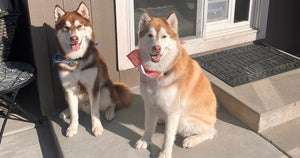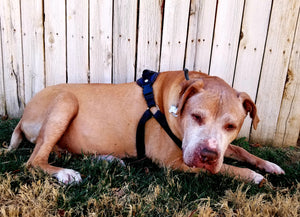Do Dogs Sweat?
You may have seen your dog panting in the heat and wondered, do dogs sweat? The answer is yes, dogs do sweat! Just not in the same way that humans do. Dogs have two types of sweat glands: apocrine and merocrine glands.
Apocrine glands are located throughout your dog’s body. Although they are considered to be sweat glands, their main purpose is to release pheromones that help dogs identify one another by scent.
Merocrine sweat glands are located in your dog’s paw pads. They are activated when your dog’s body temperature increases and they need to cool down. These glands function more similarly to human sweat glads and excrete moisture. You may notice a wet paw print on the ground on a particularly hot day!
Since dogs are covered in fur, sweat glands in different parts of the body would not be effective, since the fur wouldn’t allow the sweat to evaporate, which is how sweat cools the body. Paws on the other hand have very little fur, making them the perfect site for sweat glands to get to work on a hot day.
Although dogs do sweat through their paws, the most important cooling mechanism they have is panting. Panting controls most of your dog’s temperature regulation. When a dog pants, the moisture that evaporates from their tongue, nasal passages, and lungs cools them off as the air moves over moist tissue.
Additionally, dogs cool off in the heat with vasodilation (expansion of the blood vessels), which brings hot blood closer to the skin’s surface to cool down before returning to the heart.
Despite these nifty cooling mechanisms, dogs are susceptible to heatstroke in the heat. Ensure that your dog has plenty of water at all times and avoid walking them in intense heat. Live in a cold climate? Here’s how to protect your dog from the cold.





